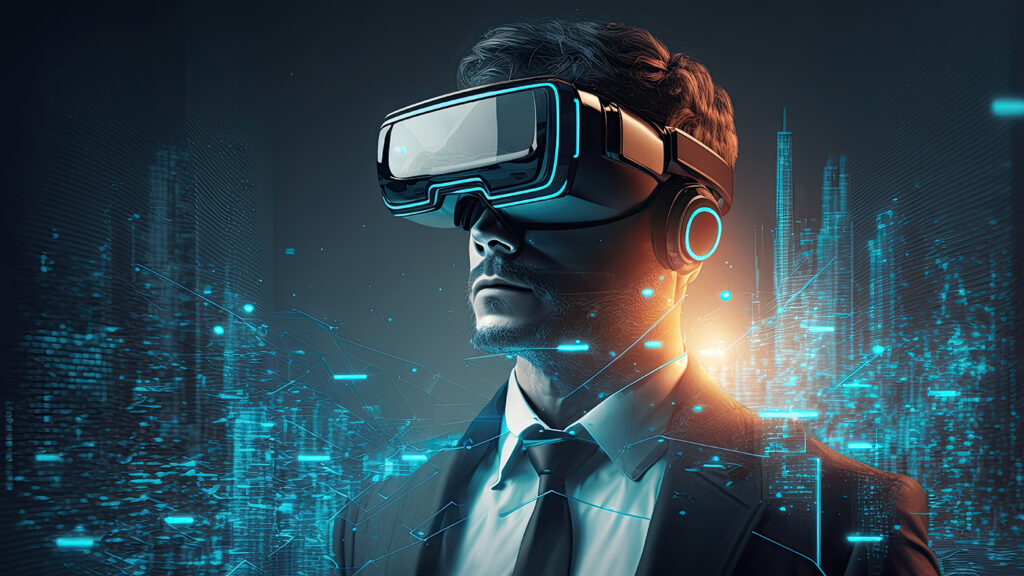Technology is continually reshaping our lives. Today, we can pick up our smartphones to effortlessly order an Uber instead of standing on the sidewalk to hail a cab. Bills can be paid through banking apps, dinner ordered through GrubHub, and your coffee table sold within minutes on OfferUp, all with a couple swipes on your mobile phone. It’s convenient, fast, and in many cases, instant. Our lives are undoubtedly intertwined with technology, especially through the smartphones most of us own. But do you think to use your smartphone to visualize a sign on a building or tour a vacant space?
The application of technology and augmented reality (AR) – the concept of adding virtual technology to real-world experiences – is exploding. While AR is similar to virtual reality (VR), they differ in the sense that AR uses technology to supplement a real-world experience, whereas the VR experience is entirely digital.
Experts have predicted there will be 3.5 billion AR-enabled devices by 2022, and the industry will be worth as much as $85 billion. “As smart glasses proliferate, we can expect the field to grow by leaps and bounds” says Karen Whitt, President of Colliers International Investment Services and Real Estate Management Services, US, “and the level of attachment we have to our personal devices to grow proportionately.”
Aside from being futuristically intriguing, AR and VR arguably have the potential to truly change how business is done in many industries, including the commercial real estate (CRE) world. Both technologies have generated great momentum in the retail sector, but what does it look like for the office or industrial markets, and will it really be adopted?
Changing Realities – Not Just for Retail
Retail establishments across the globe have successfully integrated AR into their retail operations. Holition, a creative services agency specializing in AR, made this integration possible for a variety of big names in retail such as Lacoste, Uniqlo, VANS and De Beers. For VANS, Holition created an AR mirror, allowing customers to virtually try on shoes — simply by standing in front of the mirror in the store and using an iPad to select color and style. After a few swipes on the device, the shoes virtually appear on your feet in the mirror. This innovative technology allows retailers to be creative, enhancing in-store experiences for consumers. Better yet, many consumers say they would pay more for a product if they get to experience it through AR – 40% to be exact.
So what kind of capacity do the office or industrial CRE sectors have in utilizing AR and VR in ways that follow the success of retail? Helping occupiers to see and feel a future experience is critical for redevelopments or yet-to-be-imagined space, accelerating speed to market and generating potential cost savings. And creating an experience that generates a connection with and in an existing space helps an occupier see the potential for their business in almost any real estate sector. However, the time and money saved by utilizing AR and VR might not outweigh the cost and potential risk of the service.
In theory, both AR and VR technologies can be deployed for everything from planning and the construction process, through touring a space with a potential tenant. Progressive AR firms, like Mandt Media, specialize in AR experiences specific to business and CRE. From an AR experience where users imagine a redevelopment while standing before an existing site, to assisting a potential occupier to envision their exterior signage on an existing space, AR creates a futuristic experience in a real-world environment.
While more established in a CRE environment, VR experiences are continually evolving. Igloo Vision, a developer of 360 immersive and experiential VR environments, creates projection domes for a fully-inclusive experience, placing viewers squarely in the center of the virtual environment. And, CRE VR specialist BlockVue creates environments exclusively for CRE leasing, which increase prospect engagement, visualization of project environments and virtual space planning.
The Benefits
Time is just as valuable as money, and these technologies have implications for both when it comes to maximizing company revenues. Occupiers looking for space need efficiency in their space and site selection efforts. For CRE firms, providing clients the ability to see a development in its planned location, even before construction has broken ground, could accelerate the planning and development process. In a VR application, clients can navigate through a planned development and their potential space prior to construction and ground-breaking.
When touring a space, AR and VR technologies show potential occupiers’ virtual space, offering a more personalized view of the space as a finished, customized product that incorporates their layout and finish preferences. Not only do these technology applications reduce time spent on selecting an office space that is right for an occupier, it allows for a more targeted approach to serving occupiers’ needs.
Both AR and VR scenarios offer developers and property owners speed to market – saving them both time and money in the development process while serving the needs of occupiers quickly and efficiently.
The Challenges
While AR and VR are certainly appealing tools in CRE, there are challenges to note as well. The technology behind both is continually evolving, with tech companies testing, refining and developing the platforms and features. Depending on the complexity of the service, vendors can charge anywhere from several thousand dollars to upward of $50,000.
Additionally, a challenge with the AR applications on existing assets is the potential clash with property rights. Pokémon Go, the AR game that went viral in the summer of 2016, involved GPS coordinated “PokéStops”, or set locations where players can earn points. The Holocaust Museum in Washington, D.C. happened to have several, and asked guests to stop playing the game while visiting the museum. The maker of the game hadn’t physically placed or altered anything on the property, but definitely opened questions regarding property rights and free speech. Even if AR gained greater popularity, would challenges like the aforementioned slow the growth of AR use?
The Full Impact Remains to Be Seen
According to William Granruth, Founder and CEO of BlockVue, “While we are seeing more widespread applications of VR technology in CRE, we still have a way to go for mainstream adoption. We’re currently concentrating our efforts on creating scalability and cost efficiencies for CRE-focused VR applications. Creating greater accessibility to the benefits VR and AR technologies promise is key to democratizing the technology and widespread adoption,” added Granruth.
Until such scalability — as well as cost reduction — is attainted in AR and VR, questions remain on whether the benefits outweigh the costs for widespread adoption.
It’s difficult to project exactly how large of a role AR and VR will have in the future of CRE, but we’re already seeing adoption of the technology. As these technologies become more streamlined, it’s likely that the cost of these services will decline, making it more realistic to use in many aspects of CRE — some not even yet conceived.
For now, greater strategic integration of AR and VR technology is anticipated over the next few years. Even today, Colliers Real Estate Management Services has begun including an AR rights management clause in property management agreements to ensure occupiers are covered when the use of AR accelerates. And before long, passing out AR and VR-enabled devices to clients on tour may be the standard in CRE.

 Colliers Insights Team
Colliers Insights Team

 Aaron Jodka
Aaron Jodka
 Misty Bowe
Misty Bowe
 Anjee Solanki
Anjee Solanki